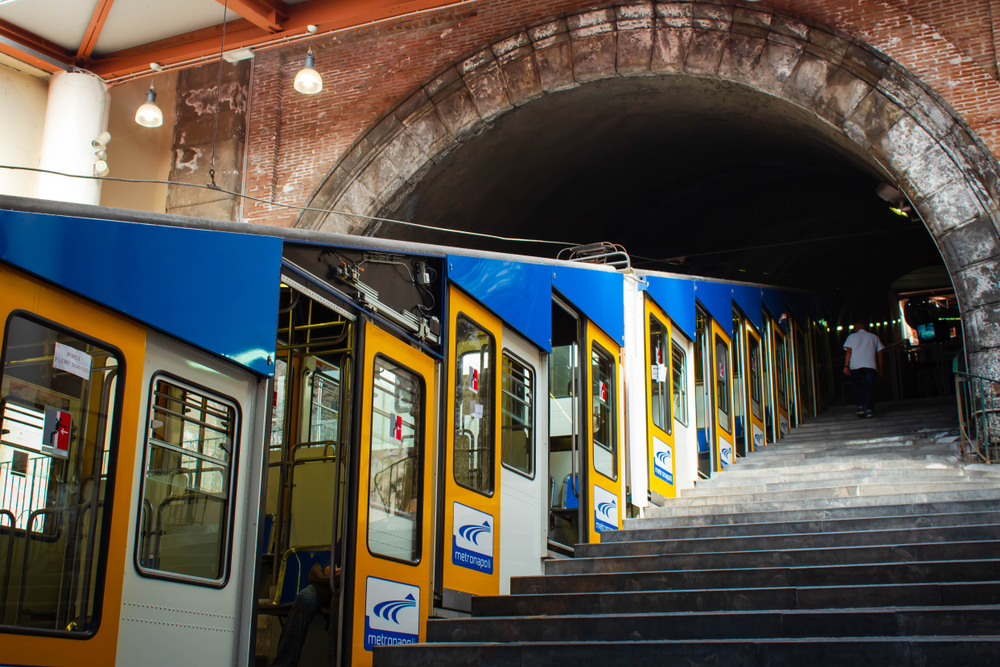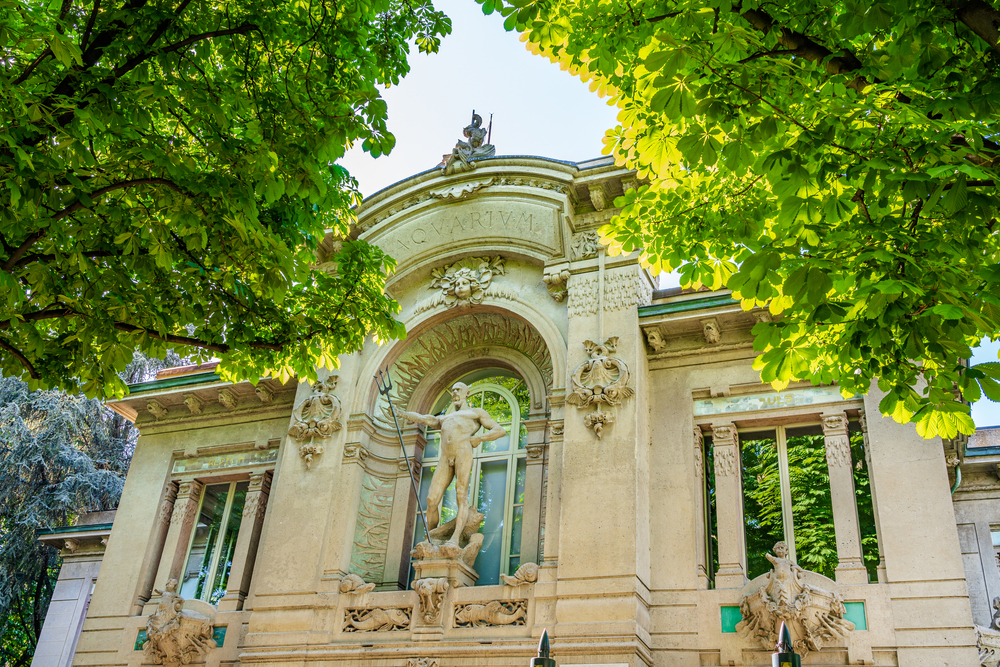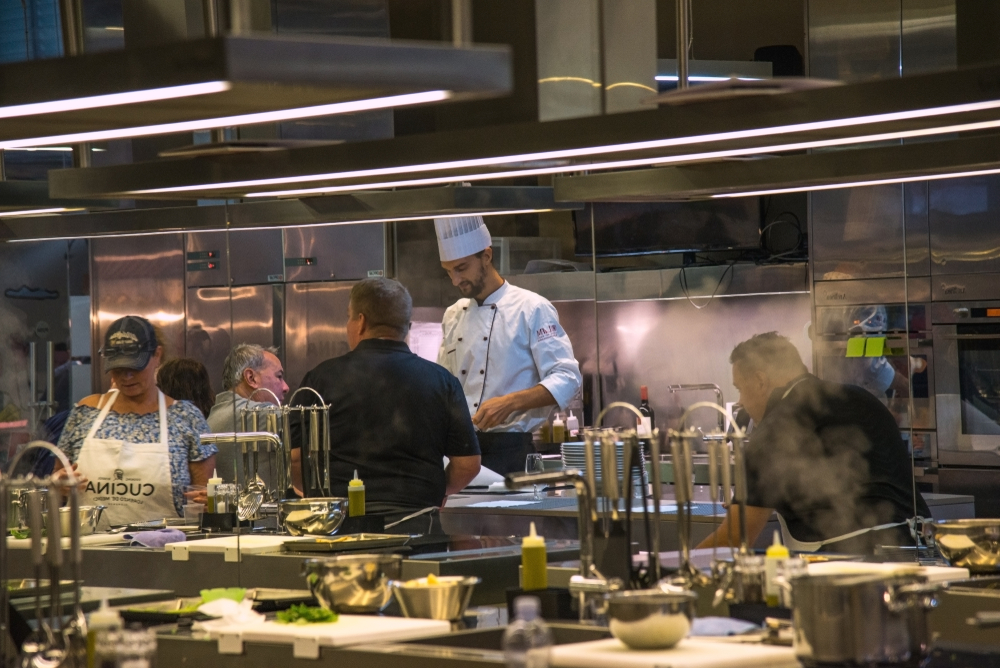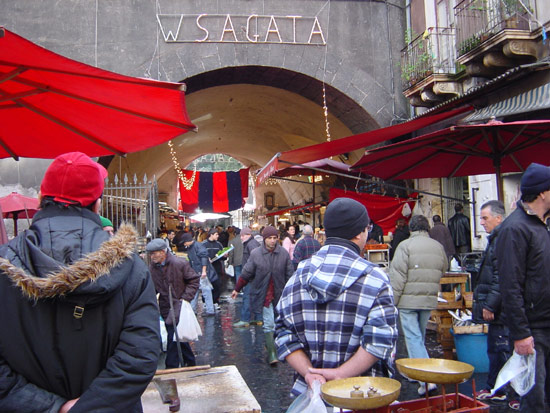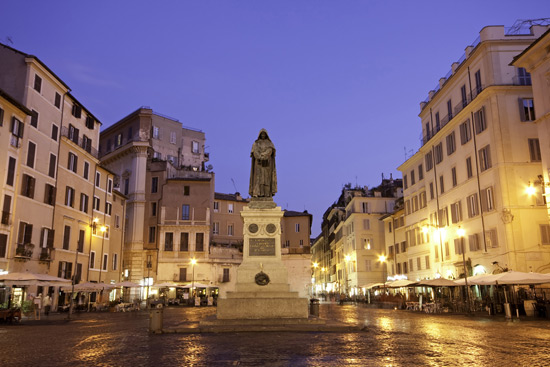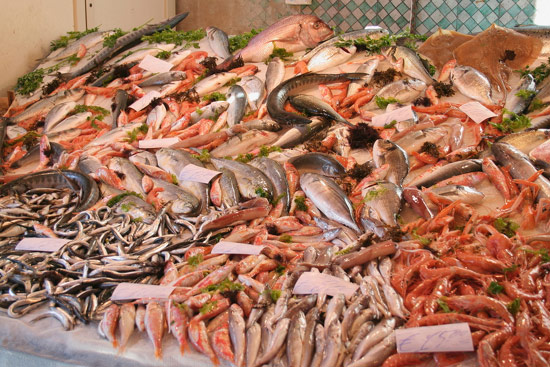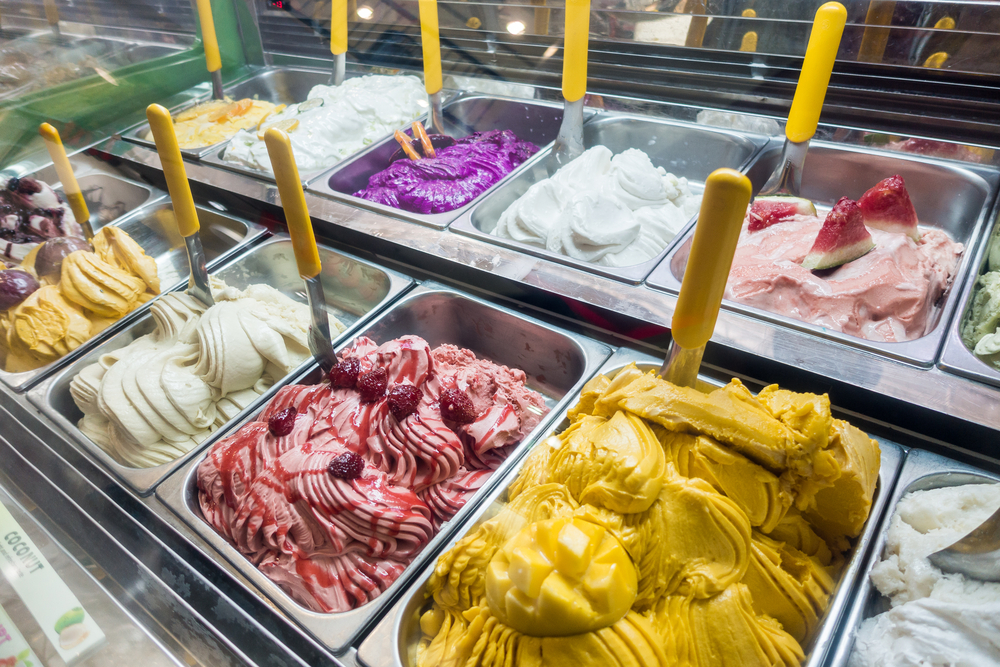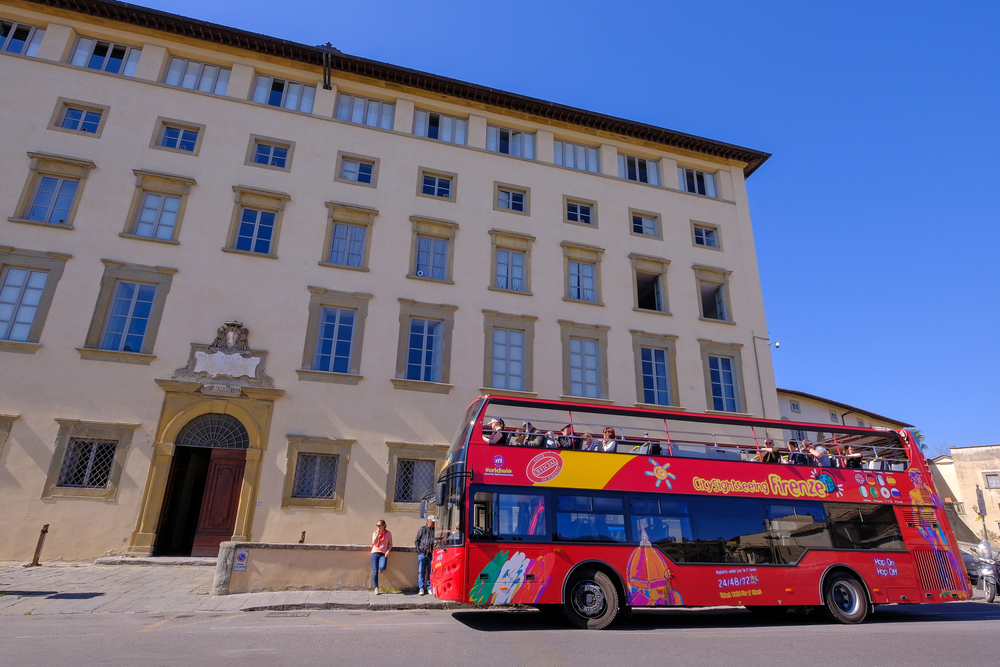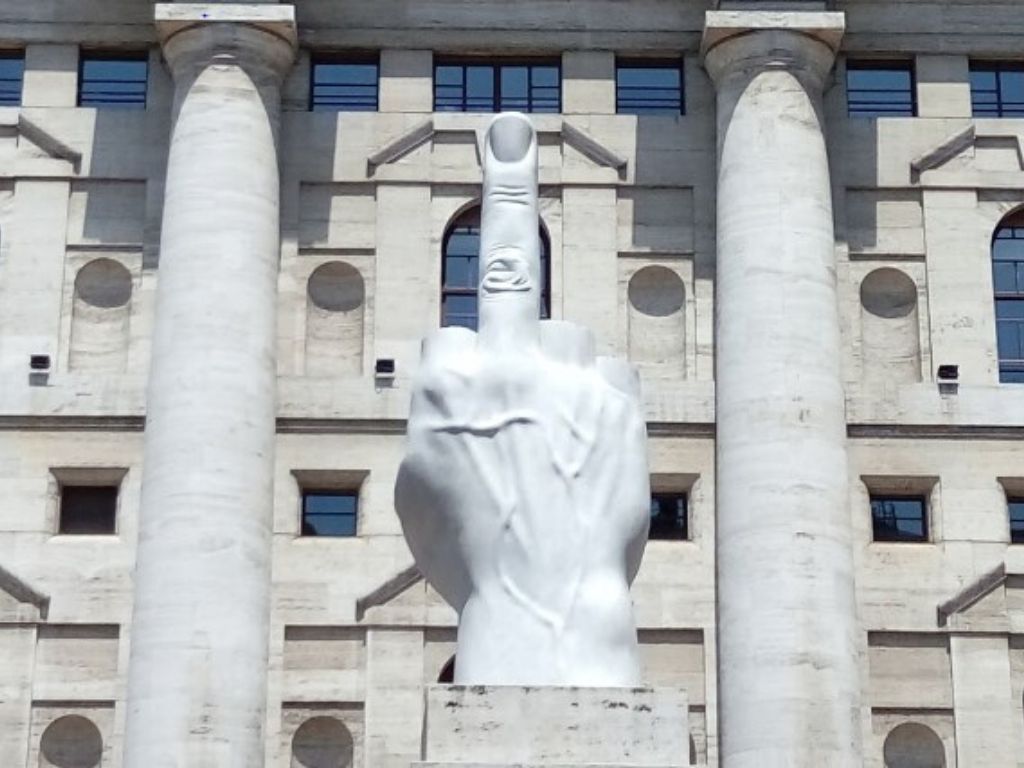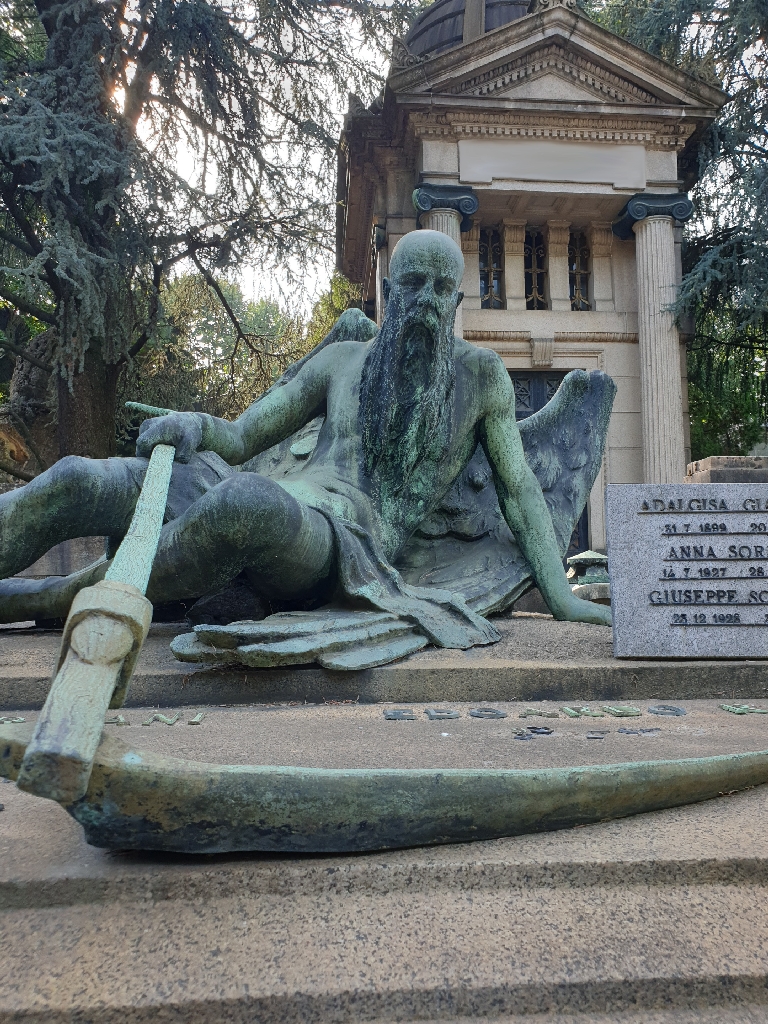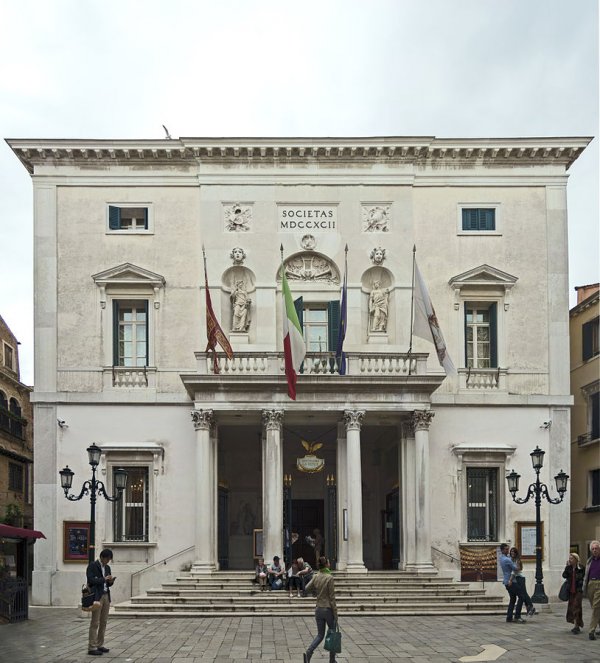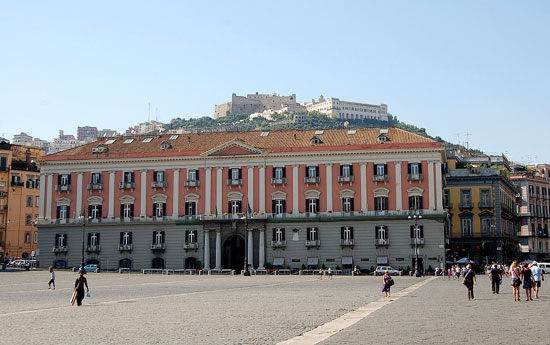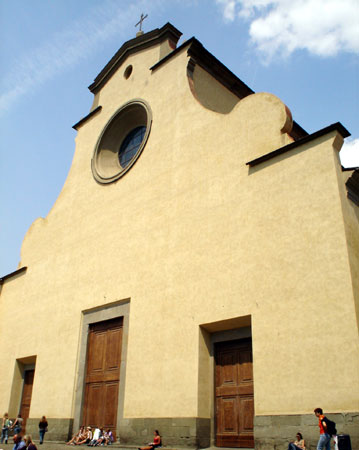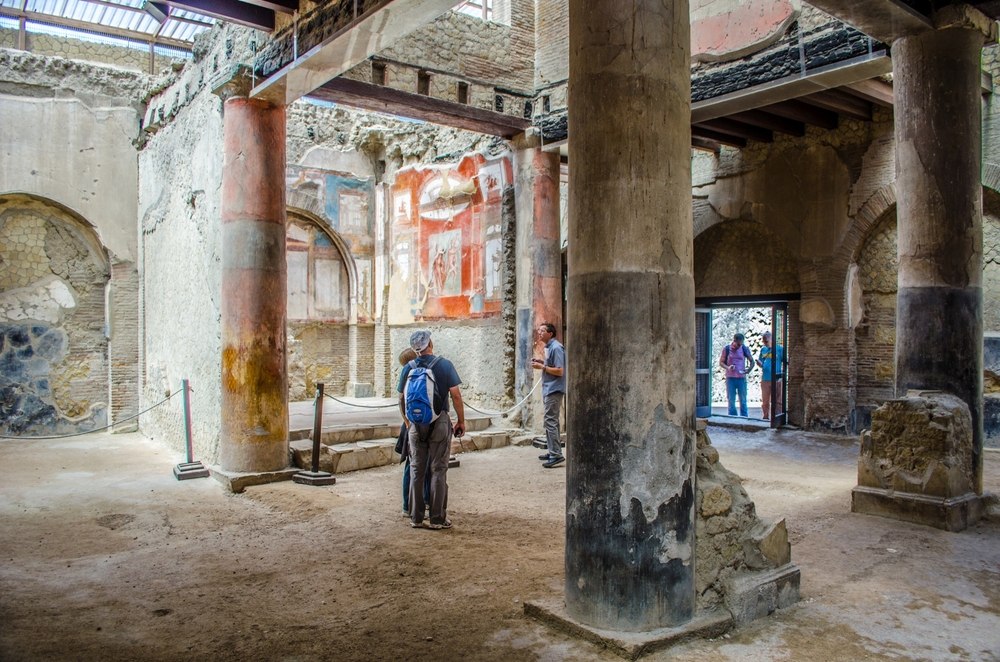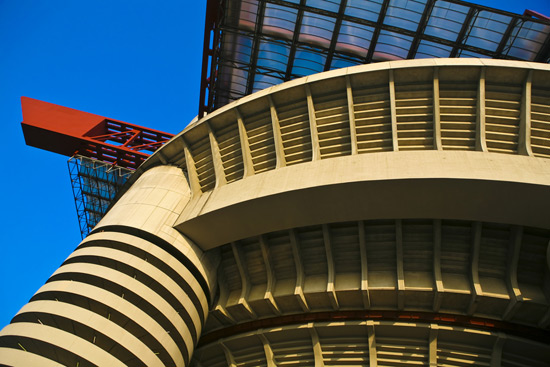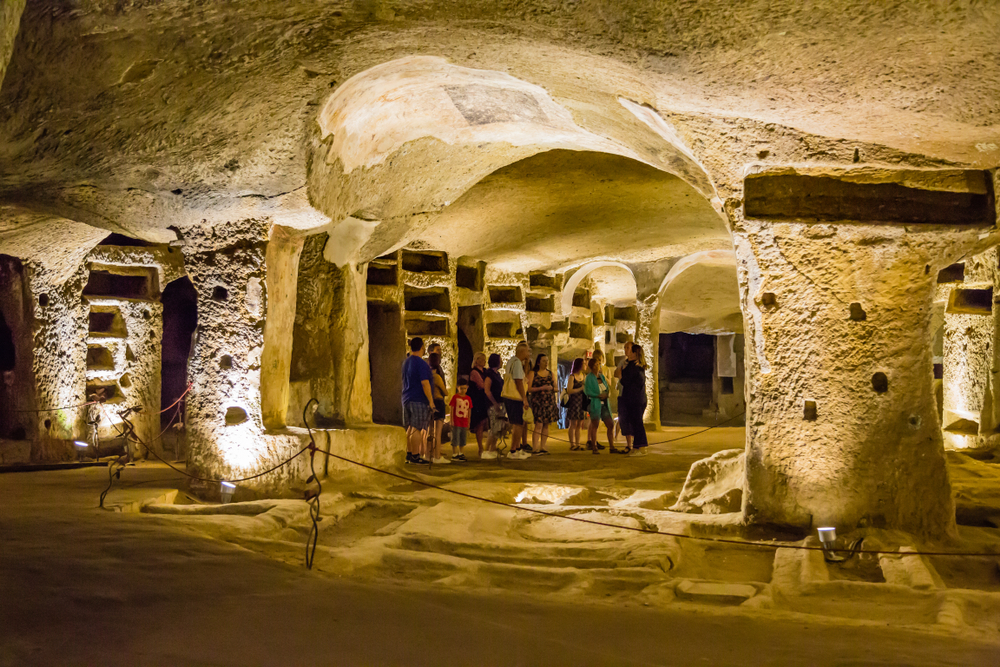Points of Interest
Antique Carousel
Republic Square
Central Florence, Italy
Among the city’s memorable scenery is a sight children will adore—a carousel. Once privately owned by the Picci family, this antique carousel is made of wood and includes 20 horses and two king’s carriages. It operates throughout the day in Florence's Republic Square from November to May. Dating to the early 1900s, the carousel has been carefully restored and is run by the fourth and fifth generations of the Picci family. The top panels are painted with depictions of Italian cities, including Pisa, Rome, and Venice, while the inside includes paintings of Roman gods and cherubs. Complete with lights and music, the carousel is small enough to engage the littlest tots and includes spaces for moms and dads to stand next to them as they whirl around the piazza.
Central Funicular
Funicolare Centrale Just off Via Toledo, Piazzetta Duca D'Aosta
80132 Naples, Italy
Ride the steep, cable-driven funicular that is part of Naples’ public transportation system, Central Funicular, from Piazzetta Augusteo to Piazza Fuga in the Vomero district. Riders will enjoy the steep incline and great views of the surrounding area. Adults will be interested to know the Central Funicular opened in 1928 and is one of the most-used funicular railways in the world, carrying over 10 million people per year. From top to bottom, the line is 1,270 meters (4,167 feet) long but ascends 170 meters (558 feet) in altitude at an average gradient of 13 percent. This is one of four funiculars in the city—perhaps plan to ride them all. Find more information, including timetables, online at www.napolike.com/turismo/funicolari-napoli.
Civic Aquarium of Milan
Sempione Park, 2 Viale Gadio
Milan, Italy
Built for the 1906 Milan Universal Expo, Civic Aquarium of Milan consists of 36 enormous tanks and pools, all providing a fascinating experience your kids should enjoy. There are more than 100 species of fish living in authentic re-creations of marine environments, ranging from the Mediterranean to Africa to Southeast Asia to the Amazon—the last featuring razor-toothed piranhas. Though there is a bias toward fresh and saltwater native Italian sea life, there’s a vast selection of foreign species as well. Educational events suitable for the whole family take place throughout the year, and the aquarium's marine biology library, repository, and archives are the most extensive in the whole of southern Europe. Check the website for information on special events, temporary exhibits, and operating hours.
Cooking Classes In Florence
Various locations throughout Florence, Italy
Get creative with your kids and take a family cooking class while in Florence. Learn to make some of your favorite Italian dishes, from gelato to pizza and pasta. There are many choices among the available classes, from a small-group affair in a private Florence apartment to lunches made at a Tuscan farmhouse. Several of the city’s hotels also offer cooking classes, many that start with a visit to the city’s Mercato Centrale to gather fresh ingredients. This is a great option when introducing kids to cooking, as transforming a vegetable or fruit into flavorful sauce or dessert will capture their imagination and inspire more experiential learning, after which they can eat the results.
Cooking Classes In Milan
Various locations throughout Milan, Italy
Get creative with your kids and take a family cooking class while in Milan. Learn to make some of your favorite Italian dishes, from gelato to ravioli and pizza. Several of the city’s hotels also offer cooking classes, and some start with a visit to the Milan city market to gather fresh ingredients. This is a great option when introducing kids to cooking, as transforming a vegetable or fruit they’ve picked out into a flavorful sauce or dessert will capture their imagination and inspire more experiential learning. Even better, after the class they get to eat the results! There are many class choices available throughout the city.
Fera O' Luni Market
Piazza Carlo Alberto
Sicily, Catania 95131, Italy
This morning market derives its name from its medieval frequency (it was originally held on Lunedi, Monday). The contemporary version takes place from Monday through Saturday (on Sunday, there's an antiques fair here). It is located on the expansive Piazza Carlo Alberto, although approaching visitors will see the overspill on many of the surrounding streets: little open-topped vans; delivery vehicles parked nose to tail; young men pushing racks of clothing; the occasional peach in the gutter. From cantaloupes to caged birds, Catanese can buy almost anything here. Wander between the temporary stalls, covered with red or blue umbrellas, and the store awnings, and you will push past tables of salt-fresh clams (vongole), baskets of snails (lumache), stalls piled high with kitchenware, hangers holding soccer shirts stamped with the names of world superstars, and more underwear than you've ever seen in your life. Echoing throughout like an opera chorus are the various male vendors, who clap, stand on stepladders, and yell their prices in hoarse voices.
Field of Flowers Square
Piazza Campo de' Fiori Rome, Italy
Campo de' Fiori means "field of flowers," and was likely a literal description originally, as this part of Rome was largely undeveloped until the late 1300s. Today Piazza Campo dei Fiori is home to a busy morning market selling flowers, produce, cheese, and fresh meats. After sundown the local bars overflow into the square, which stays noisy and crowded till the early hours of the morning. Executions were held here, including that of Giordano Bruno, a former Dominican priest whose views on the nature of the universe led to his trial for blasphemy and heresy. Unlike Galileo, he refused to recant, and was burned at the stake in 1600. A dark statue of Bruno stands in the square today, brooding grimly over the happy shoppers and vendors.
Fish Market
La Pescheria Piazza del Duomo
Catania 95131, Italy
The city's most celebrated market is open every morning except on Sundays on Piazza Pardo, a block or two west of the cathedral. Spilling into the neighboring streets are stalls laden with glistening octopus, squid, and cuttlefish (take care of your footing-there are scales and fish guts everywhere). Wander beneath the red umbrellas to see and smell striped mackerel arranged in fan shapes, little green nets bursting with mussels, displays of skate and ray, blue plastic buckets of water and fish, and piles of pink shrimp. The island of Sicily is famous for its seafood, and many of its delicacies come from very specific locations-Sciacca, for example, providing anchovies and sardines. Many other fish come from Mazara del Vallo, on the west side of Sicily, one of the island's most successful fishing ports. Whether you're there to crack open and eat a sea urchin (locals use a mussel shell as a spoon), or simply to wander and wonder, this is one of Catania's most atmospheric events.
Gelato Tasting Tour In Florence
Throughout Florence, Italy
After just one lick you’ll agree that the pursuit of more gelato is a worthy task to undertake. Gelato is the Italian version of ice cream, yet denser and creamier. Some say that Florence is where it originated. Your kids will have fun on this tasty quest, though may find it difficult to choose a flavor among watermelon, pistachio, rose, lavender, and chocolate, to name just a few. Those in the know advise to avoid gelato shops than advertise exclusively in English or gelato that comes in bright, artificial colors. Look for shops with covered stainless-steel containers and friendly service, as well as signs reading “Produzione Propria/Gelato Artigianale.” This should indicate that the gelato was made in-house in artisanal fashion, not mass-produced with mediocre ingredients. Among Florence’s favorite shops are Vivoli, Gelateria La Carraia, Grom, and Perché No!
Gelato Tasting Tour In Milan
Various locations throughout Milan, Italy
After just one lick your kids will agree that a family mission to try as many flavors of gelato as you can is a fun way to experience Milan. Gelato is the Italian version of ice cream, yet denser and creamier. Children will surely enjoy this tasty quest, though may find it difficult to choose a flavor among watermelon, pistachio, rose, lemon, and chocolate, to name just a few. Those in the know advise to avoid gelato shops than advertise exclusively in English or gelato that comes in bright, artificial colors. Look for shops with covered stainless-steel containers and friendly service, as well as signs reading “Produzione Propria/Gelato Artigianale.” It indicates that the gelato was made in-house in artisanal fashion, not mass-produced with mediocre ingredients. Among Milan’s favorite shops are Ciacco (near the Duomo) and La Gelateria La Della Musica (Navigli neighborhood), to name just two.
Hop-On Hop-Off Bus Tour
Piazza di Santa Maria Maggiore
50123 Florence, Italy
Who doesn’t like seeing sights from a double-decker bus?! With so much to see in Florence, the amount of walking will tire out not only the little legs in the family. Hop-on hop-off bus tours called City Sightseeing Florence offer flexibility and an efficient way to see some of the city’s most popular sights, totaling about 15 in all. Among them are the Cathedral of Santa Maria del Fiore, Boboli Gardens, and Pitti Palace. Although buses can’t navigate through the city center, there are three different routes and commentary is available in several languages. Relax and take in the sights without worrying where the kids are and hop off when you please. The bottom level of tour buses is wheelchair accessible.
L.O.V.E. statue
Il Dito Piazza degli Affari
Milan, Italy
Irreverent images that capture a feeling tend to resonate the most with viewers. This sentiment may explain why a sculpture where Milan’s stock exchange is headquartered is so popular. Entitled L.O.V.E., for Libertà, Odio, Vendetta, Eternità (Freedom, Hate, Vengeance, Eternity), the 11-meter (36-foot) sculpture depicts a hand with only the middle finger raised. Locals call it “Il Dito" (The Finger), and in fact, there are no other fingers curled under, with the others appearing to have been chopped off. The gesture, recognized throughout the world as one most often shown in anger or frustration, was created in marble in 2010 by Italian artist Maurizio Cattelan, known for creating other provocative works of art. Though L.O.V.E. was intended to stay in its location for just a few weeks, the city has kept it there, perhaps indefinitely. It has been speculated that the statue may be an overall statement as to Italy’s—and the world’s—financial crisis that began in 2008, or it is a gesture toward the building it faces, a fascist-era construction built when the dictator Mussolini ruled over the country. Though Cattelan never commented on the sculpture’s meaning, the visitors who detour to the business district—not generally on a tourist’s agenda—to take pictures with it are open to contemplation. Perhaps the statue is flipping the bird to the status that money seems to hold in today’s world.
Monumental Cemetery of Milan
Cimitero Monumentale di Milano Piazzale Cimitero Monumentale
Milan, Italy
Though a cemetery may not be the first place you think to visit when seeking art and sculpture, Milan’s Cimitero Monumentale di Milano should be considered nonetheless. The cemetery is one of Milan’s two largest, covering 5,000 square meters (about 53,800 square feet) and is noted for its large amount of artistic tombs and monuments. Included is a large, central mausoleum called the Famedio (Temple of Fame), home to some of Milan’s honored citizens. The Famedio’s beauty includes its architectural style, gothic rose window, and decorative floral and geometric designs. A stroll around the cemetery grounds offers life size sculptures of angels, soldiers, figures representing death, faith, and Greek gods, skulls, flowers, crosses, and more. There is an area dedicated to notable mountaineers and hikers, including a bas relief of a mountain landscape. A quiet and peaceful area shaded by large trees, a stop to the Monumental Cemetery allows for introspection and for pondering the lives of its inhabitants, as well as for admiring the cemetery’s unlikely art.
Navona Square
Piazza Navona Between Via di Santa Maria dell'Anima and Corso del Rinascimento
Rome 00186, Italy
Piazza Navona is Rome's most inviting and engaging square. More of an elongated rectangle than a square, the piazza grew around the ruins of an ancient racecourse. The curve of the track can be traced in the rounded northern end of the square. Apart from the Church of St. Agnes of Agone, the buildings surrounding the square are equal (or nearly so) in height, giving the piazza a harmonious appearance. Several cafés and restaurants with sidewalk seating are dotted throughout. This is a great place to relax, have lunch or a glass of wine, and practice your Italian with local residents. The piazza also hosts art shows, live music, and a variety of open-air markets, including a wonderful Christmas toy market in December.
Phoenix Theater
Teatro la Fenice 1965 Campo San Fantin
30124 Venice, Italy
Teatro La Fenice, located in Venice and inaugurated in 1774, has been home to many famous operatic premieres. Famous Italian composers like Bellini, Rossini, and Guiseppe Verdi premiered many of their productions at this theater. The theater was twice razed by fire and once lost in a legal battle involving the owners and the theater management. Reconstructed in 1790, 1837, and 2001, the current structure was built with the help of old photographs to resemble the original 19th-century style.
Piazza Plebiscito
Piazza del Plebiscito
80132 Naples, Italy
A large public square, Piazza Plebiscito is a gathering spot for Naples’ residents, where they come to stroll, chat, and let the kids play. The expansive open space includes some of the city’s major monuments and architecture, including the royal palace, the domed Basilica of San Francesco da Paola, and the pastel-colored Palazzo della Prefettura and Palazzo Salerno, one located on each side of the piazza. Enclosed by a curving row of columns, the scenic area conveys the city’s grandeur and includes bronze equestrian statues that will make for fun photos of the kids. Various concerts and events are held here throughout the year or just wander through the narrow streets and people watch. Before you leave the area, stop by the historic Gran Caffe Gambrinus in the corner to grab some coffee and pastries, or stay to admire this coffeehouse that was a haven for the city’s residents, intellectuals, and politicians, dating to 1860 and including decorative ceilings.
Piazza Stesícoro
Via Etnea and Via Pietro Garofalo Sicily Catania
Sicilia, Italy
Situated astride Catania's main street, Via Etnea, is this extraordinary square. There's an imposing statue of composer Vincenzo Bellini, the Chiesa di San Biagio (sometimes known as Sant'Agata alla Fornace, or St. Agatha of the Furnace, a reference to the fiery torture Agatha endured), and one of Catania's archaeological gems-the Anfiteatro (Amphitheater). Dating from the second century, this stepped arena was where Saint Agatha was reputedly tormented. Though the marble facing on the seats has been worn away to reveal the volcanic masonry beneath, the order and architecture is plain. The section preserved on the west side of Piazza Stesícoro (admission free, closed Mondays) is only a segment of the original amphitheater-a painting on the site shows how the Roman arena would have looked when it was full of 16,000 spectators. Compare that with the Stadio Angela Massimino, contemporary Catania's soccer stadium, which would be lucky to attract similar numbers 18 centuries later.
Pizza Tasting Tour
Various locations throughout Naples, Italy
Though your family may not be able to sample pizza from all of Naples’ more than 800 pizzerias, it’s a tasty goal to aspire to. The city is known as the birthplace of pizza, where it evolved from similar flatbread dishes sometime in the late 1700s. Neapolitan pizza, or Naples-style pizza, is simple and delicious, including sauce, mozzarella cheese, and fresh basil. The key to its popularity is to use fresh ingredients and cook it at high temperatures, usually between 426–482 degrees Celsius (800–900 degrees Fahrenheit) for just one minute. There is even the Associazione Verace Pizza Napoletana, which certifies the city’s pizzerias that use artisan traditions, including the type of flour used to make the dough. Consider seeking out Antica Pizzeria Port’Alba in Centro Antico, which is regarded as the world’s first pizzeria, dating to 1738. Kids may not care about all this history and detail, just about where to get the next delicious pizza—perhaps the most famous fast-food the world’s ever known.
Pizza-Making Class
Various locations throughout Naples, Italy
There are many places in Naples offering classes on making that famous Neapolitan pizza—an experience the whole family should enjoy. Some say cooking is an art form, something that will be conveyed by the care and craft that goes into transforming the simplest ingredients into a mouth-watering delight. Get creative with your children and spark their interest in cooking with experiential learning where they get to eat the results of their work.
Plaza of the Holy Spirit
Piazza di Santo Spirito Florence, Italy
The streets running off the piazza offer a similar array of choices, which means it is easy to find a spot fitting your requirements. If you're here in the evening and want to try something a little different, an outdoor cinema stands a little less than a kilometer away (.6 mi). Cinema Chiardiluna at Via Monte Oliveto 1 offers movies under the stars from early June to early August, with show times usually starting no earlier than 9:30 p.m.
Ruins Tours
Pompeii or Herculaneum Ruins
Milan, Italy
All you need to do to travel back in time is drive about 24 kilometers (15 miles) from Naples, where you’ll end up at the ancient, ruined city of Pompeii. You know the one—destroyed by hot gas and lava that erupted from nearby Mount Vesuvius in 79 CE. An experience that will transcend any schoolbook learning, a visit is sure to create lasting memories. In addition, there are the ruins of Herculaneum to consider, also close by, at just 15 minutes from Naples. These excavated cities include many streets, houses, villas, baths, and temples that are still standing. The sight of all this will bring life in the 1st century to the forefront of the imagination, giving kids a glimpse of what Roman cities looked like nearly 2,000 years ago. You can reach both cities by trains that leave from central Naples.
San Siro Stadium
Stadio San Siro Piazzale Angelo Moratti
20151 Milan, Italy
Soccer players are sure to enjoy a visit to this symbol of Milan. The hallowed turf of San Siro stadium has played host to World Cups, Champions League finals, and some of the greatest moments in the history of soccer, called football here. Since 1926, the San Siro has been the grand home of Italian football. Guided tours of the 80,018-seat arena are available, and the view of the Duomo from the east stand is staggering. But the best experience is to watch a Serie A league match, usually on Sundays. The stadium’s San Siro Museum boasts life-size statues of football heroes such as Franco Baresi, Paolo Maldini, and Ruud Gullitt, as well as hundreds of medals, trophies, and jerseys. There also is a store to pick up souvenirs.
Underground Naples
Napoli Sotterranea Beneath the Historic City Center
Naples, Italy
No one in the family is likely to forget the unique experience you’ll get under the streets of the city center. Napoli Sotterranea (Underground Naples) is found 40 meters (120 feet) below ground, including aqueducts, secret chambers, catacombs, and even vegetable gardens. Their construction began over 2,000 years ago, and the area was used as an air-raid shelter during World War II. Your tweens and teens may be most excited to explore here, though little ones may find it spooky. Touring the area, with its hidden labyrinth of tunnels and passageways, gives a glimpse into an ancient way of life. Some areas are optional, as tunnels are extremely narrow and require use of a candle to see by. Guided tours are the only way to visit here, which last about 90 minutes.
Vasari Corridor
Corridoio Vasariano Florence, Italy
This raised passageway runs for just under a kilometer (0.6 miles) and crosses the Arno River by running above the jewelry shops on the Ponte Vecchio (Old Bridge). Marvelous views of the city are available from the round windows set into the corridor, which has also been lined with more than 1,000 paintings from the Uffizi collection, including work from masters such as Rubens, Bernini, Van Dyck, Rembrandt, and Titian. Reservations to view the corridor are required; while the cost is steep compared to other attractions, the Vasari Corridor is a unique Florentine experience.
Zero-Gravity Trampoline Park
48 Via Carlo Valvassori Peroni
20133 Milan, Italy
Let your children bounce and play at this trampoline park that offers a break from all that history, art, and culture! Sometimes the simplest activities are the best when it comes to keeping kids amused. The whole family can get a little exercise while flipping and having fun, or just watch as your kids laugh and enjoy the free-form play. Some of the trampolines include ramps and there’s a foam pit, ninja warrior area, and dodgeball courts. Rates are charged per hour; check the website for more information including operating hours.
Copyright © 1993—2025 World Trade Press. All rights reserved.

 Italy
Italy 
